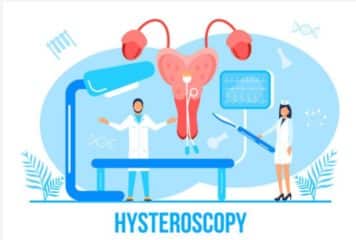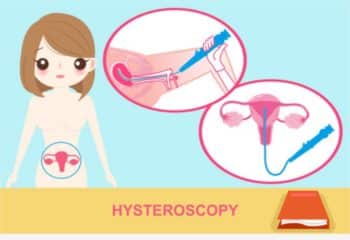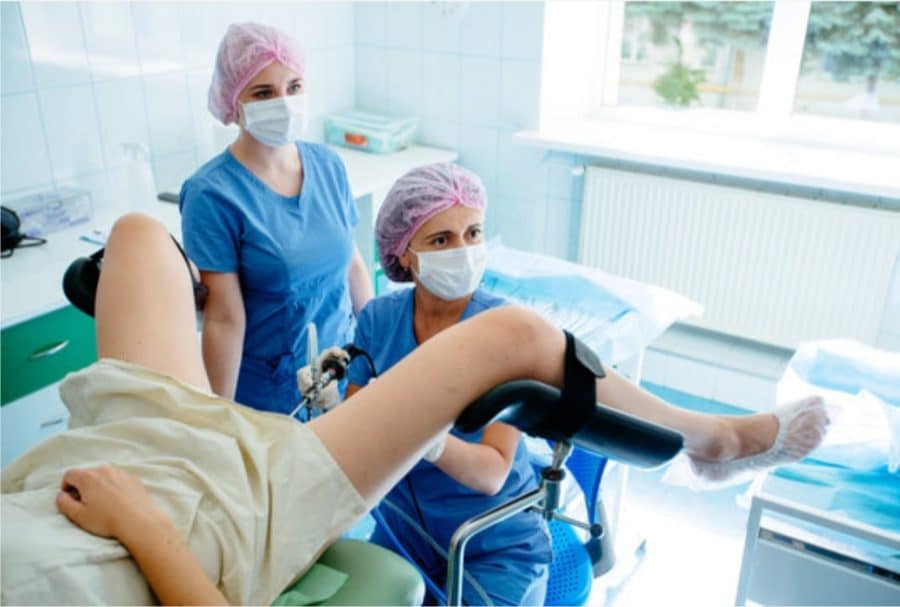A hysteroscopy is a procedure used to inspect, diagnose, and treat problems of the uterus or womb. The procedure involves a thin, telescope-like camera inserted into the uterus via the vagina. The camera has a light on the end and is called a hysteroscope.
In Nigeria, all fertility clinics and hospitals carry out the procedure, though quality might differ you can be sure of government-owned hospitals.

The Cost of hysteroscopy depends on so many factors like reasons the doctor recommended the procedure for you, the type of hysteroscopy, would the procedure involve removal of the fibroid, anesthetics you would use after the procedure and even the quality of clinic and doctor. Therefore, because of this, we will go into details in order for you to get all you need to know about hysteroscopy in Nigeria this 2021.
Apart from the cost of hysteroscopy in Nigeria in 2021, we will also be looking at the following;
- Reasons for hysteroscopy
- Preparation
- Surgery
- Recovery
- Side effects, and of course
- Cost.
Reasons for hysteroscopy

Diagnostic hysteroscopy is carried out to investigate abnormal uterine bleeding. Abnormal bleeding is defined as menstrual periods becoming heavier, happening more frequently, or lasting longer than usual. Abnormal bleeding can also occur in prepubescent or postmenopausal women, while bleeding between periods is another abnormality.
The second type of hysteroscopy called an operative hysteroscopy uses the hysteroscope as a surgical tool.
Cost of hysteroscopy in Nigeria depends on whether it is a diagnostic hysteroscopy or operative hysteroscopy that is carried out.
A hysteroscopy cannot be performed when a woman is having a period. It is usually carried out in a hospital or doctor’s office and does not require an overnight hospital stay.
The goal is to diagnose or treat problems of the uterus or womb. The two types of hysteroscopy are diagnostic and operative.
A woman undergoing a diagnostic hysteroscopy may need a further operative hysteroscopy, depending on the findings.
Diagnostic hysteroscopy

A hysteroscopy may be performed to diagnose conditions or investigate the causes of various problems.
Besides abnormal bleeding, a woman may need to undergo a diagnostic hysteroscopy for reasons that include:
To diagnose the cause of repeated miscarriages
This tends to be if a woman suffers two miscarriages in a row.
To diagnose some conditions, such as fibroids or polyps, which are non-cancerous growths in the womb.
To investigate fertility issues if becoming pregnant is a problem.
To investigate pelvic pain a woman is experiencing.
Operative hysteroscopy
This procedure can be used in the following circumstances:
To remove adhesions, these are scars that bind tissues together inside the uterus and may have occurred following infection or surgery. Adhesions can stop periods and reduce fertility.
To locate and remove an intrauterine device inserted into the uterus for birth control.
To remove fibroids or growths
To perform a sterilization procedure
To take a biopsy of tissue for further investigations
Preparation
The woman may need to take a pregnancy test about a week before a hysteroscopy is performed and will be advised to use appropriate contraception in between. This is because a hysteroscopy cannot be carried out on someone who is pregnant.
If fibroids are to be removed during the procedure, medication to reduce their size may be prescribed beforehand.
Surgery (How hysteroscopy is done)
A speculum will be inserted into the vagina during a hysteroscopy. This may cause slight discomfort.
Before a hysteroscopy is carried out, the woman may be given medication, often a sedative, to help her relax. Depending on the situation, general or local anesthesia may be offered to ease any pain.
The healthcare team may also insert medication into the cervix to open or dilate it. This is done to make the procedure easier to perform.
During the surgery, an instrument called a speculum is then inserted into the vagina to open it wider, before the hysteroscope is put in. To help the doctor to see the lining of the uterus more clearly, a carbon dioxide gas or fluid is pumped through the hysteroscope into the uterus. The amount of fluid introduced will be monitored closely throughout the procedure.
As the hysteroscope is moved gently through the uterus, images of the tissue and the openings of the fallopian tubes are displayed on a screen.
During a diagnostic hysteroscopy, doctors will observe the images and look for problems.
An operative hysteroscopy will use the hysteroscope as a surgical tool, for example, to remove fibroids.
If sterilization is being performed, small implants are placed inside the fallopian tubes.
If a biopsy is needed, a small instrument is passed through the hysteroscope to extract a sample of tissue.
The procedure can take up to 30 minutes, but may only take between 5 and 10 minutes if it is being used to diagnose a condition or investigate symptoms.
While a hysteroscopy is not usually painful, the woman may experience cramps while it is being carried out.
Recovery
Some bleeding, and cramping similar to period pains, is normal after a hysteroscopy.
If a general anesthetic is used before the procedure, the person may need to wait for the effects to wear off before going home.
Most women feel able to go about their normal activities the following day, and some even go back to work the same day. If a general anesthetic is used, a few days of rest might be advisable.
Some spotting or bleeding may occur in the days following the procedure, and the woman can expect pain like cramping, similar to period pains. These symptoms are normal.
A woman is advised to avoid sex for a week or until any bleeding has stopped, to reduce the risk of infection.
The woman should be able to go home shortly after the hysteroscopy.
The cost of hysteroscopy in Nigeria may increase if the woman did not recover quickly and have complications.
However, a hysteroscopy is considered a safe procedure with complications being rare.
Side Effects
It is normal to experience mild cramping or some bloody discharge for a few days afterwards.
There is a small risk of complications, and these are more likely to happen in women having operative rather than diagnostic procedures.
These complications, which are all very rare, include:
Damage to the womb: Treatment with antibiotics or, in rare cases, surgery may be required.
Damage to the cervix: This can usually be easily repaired if it occurs.
Womb infections: This can cause an odorous discharge, fever, and heavy bleeding, and can usually be treated with a short course of antibiotics.
Feeling faint or dizzy: Around 1 in 200 women who have a hysteroscopy either under local anesthetic or with no anesthetic will feel faint.
Excessive bleeding during or after the procedure: This can be treated with medication or a further procedure. In very rare cases, the womb may need to be removed.
Anyone who has a fever, chill or heavy bleeding after a hysteroscopy should seek medical attention.
Remember that in relation to the cost of hysteroscopy in Nigeria, the treatment of the side effects will increase the cost.
Cost of Hysteroscopy
As we said at the beginning of this article, the price varies according to the type of procedure
In the USA, Some sources put the price at around $1,500 while others estimate it to between $3,000 and $7,000.
In Nigeria, the price varies from one fertility clinic to another with an average of 750,000 Naira.
Additional procedures, such as removing fibroids or adhesions, tend to cost extra.
RELATED READING
- Cost of MRI Scan in Nigeria (2021): All You Need to Know
- Cost of Ultrasound Scan in Nigeria (2021): All You Need to Know
- Cost of Dental Braces in Nigeria (2021): All You Need to Know
- Cost of Treating Hepatitis B in Nigeria (2021): All You Need to Know
- Cost of Endoscopy in Nigeria (2021): All You Need to Know
- Cost of Medical Check-up in Nigeria
- Cost of Root canal treatment in Nigeria? 3 Benefits of Root Canal
- Cost of Radiotherapy in Nigeria (2021): All You Need to Know

